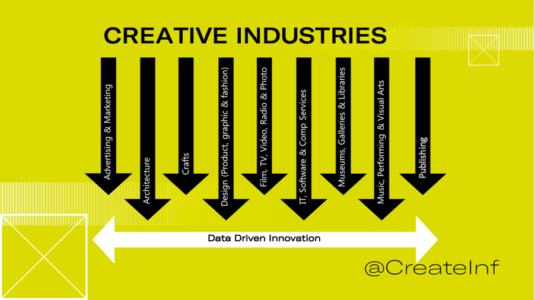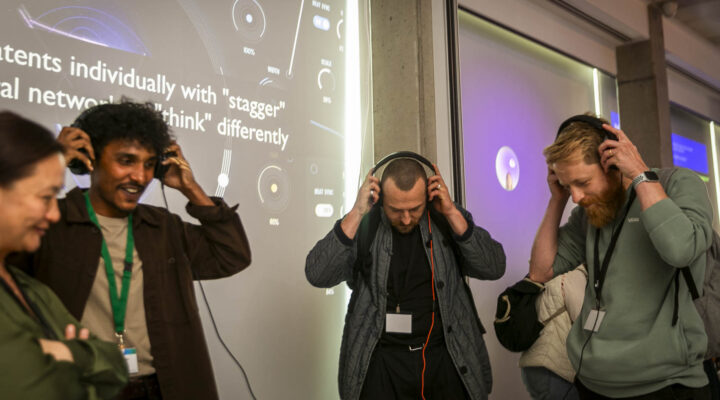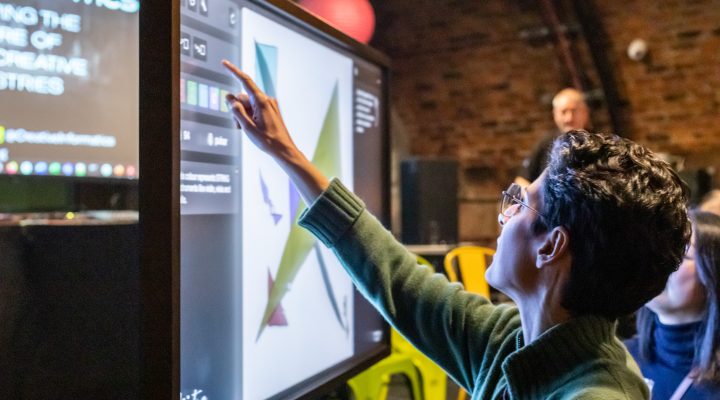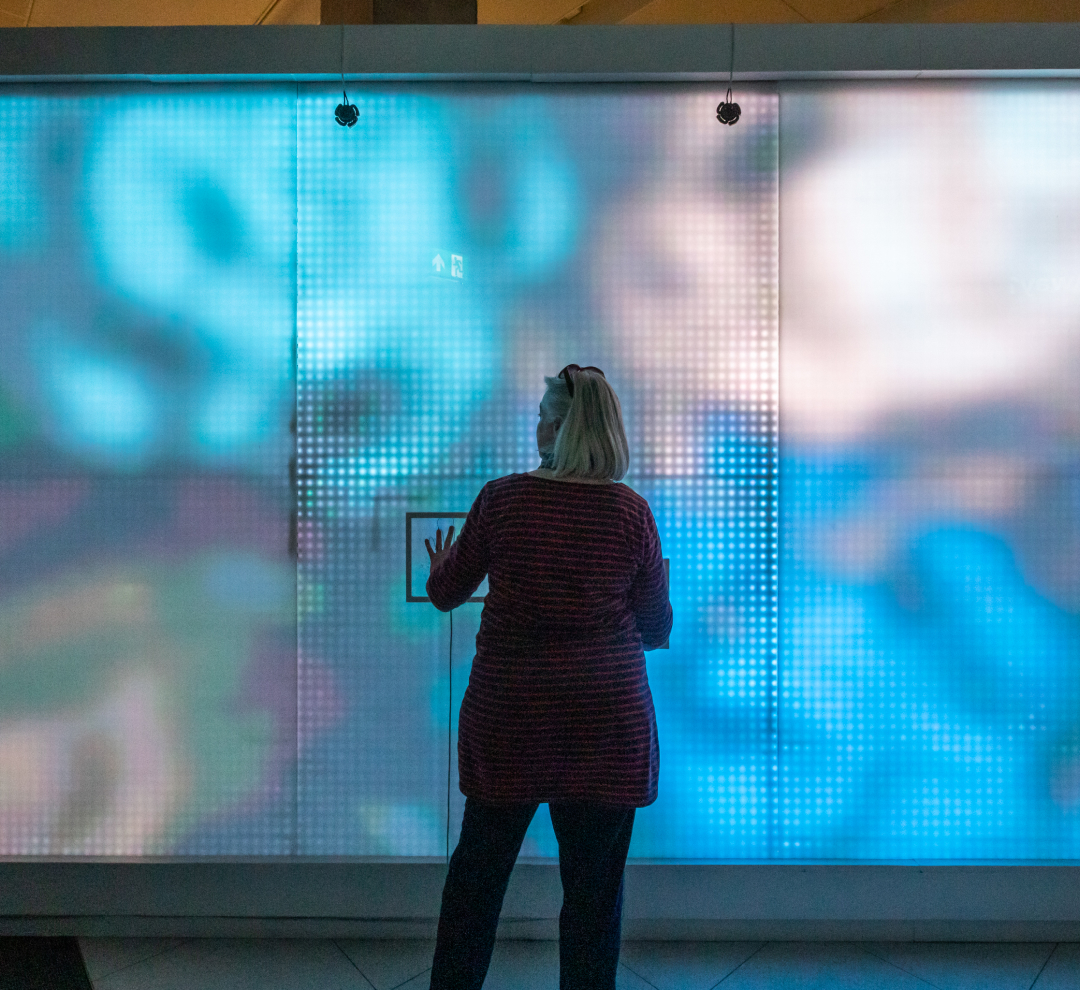
PROJECT | INGE PANNEELS |
Creative Informatics (CI) serves all of the nine sectors which comprise of the Creative Industries as understood by the Department of Culture, Media and Sport (DCMS) (see Fig. 1) who are responsible for the Creative Industries at UK Government level. The Creative Informatics project, as part of the AHRC Creative Clusters programme, which has come from the UK Government’s Industrial Strategy (2017) growth agenda, has – and continues to fund – a range of Research & Development projects in Edinburgh and South of Scotland Region City Deal.

Figure 1: The Nine Sectors of the Creative Industries as understood by the DCMS and as used by Creative Informatics.
Creative Informatics wanted to ‘map’ the geographical spread, composition and make-up of the Creative Industries in the six local authorities which make up the Creative Industries which are part of the City Deal region: Edinburgh City, East-, West- and Mid-Lothian, South Fife and the Scottish Borders. We knew from experience, and from our project partners (Creative Edinburgh) and industry partners (Creative Scotland, DDI, NESTA, DCMS) as well as industry bodies that mapping the creative industries has a well-defined problematic. It was clear that the data gap on freelancers remains large, especially in the official statistics. By actively collecting more data on the freelance workforce in particular, we hope to be able to get more accurate data to help those that currently are not well served by the statistics and thus not served well by policy either. We have produced a digital map (made by Krzysztof Stepien using ESRI software), populated from publicly available datasets (FAME) based on Standard Industrial Classification (SIC) codes (see also previous blogpost on issues with those) to make visible the location of creative businesses in the region. Established research and our local knowledge of the creative industries confirmed that the data pulled from FAME was significantly lacking in accurate data on the freelance sector. We sought to remedy this by enabling creatives to add their own business to the map. Through mapping, the geographical spread and location of the creative industries in the region was highlighted and will allow future research to be developed. For over two decades, the mapping of the creative industries in the UK has been a means of understanding the sector but has known limitations. The creative industries, as understood by the DCMS, are often not captured adequately in official data and are known to have particularly significant gaps on the self-employed and freelancers. The increased share of freelance and self-employed in the workforce in general, and in the creative industries in particular, is an ongoing trend which is unlikely to reverse, and which Covid19 has highlighted.
The map we have created thus invites creative businesses to check if they are represented in the official data and if not, to literally add themselves to the map. You can visit the map here (see also Fig. 2). The Search function (top left) can be used to find the creative business you are looking for. If you cannot find your own creative business, then we invite you to add your creative business to the map by clicking on the link symbol (top left corner, to the left of the search option) to complete a form to add your details to the map. The data we collect here will ask for four data points: your business name, your business postcode (so we can locate you on the map), your business web address (so others can find you) and finally, we will ask for two SIC codes, more on which here. All data will be made publicly available so we will ask for your consent. We know the SIC codes are crude instruments but by collecting these we will be able to get a better picture of the make-up of the creative industries in the region. We are particularly keen to get a more accurate picture of the freelancers and sole traders working in creative industries in the Edinburgh Region. We have also created a map of the creative industries as understood by the Scottish Government (who use sixteen sectors as opposed to nine), using the same base data which populates the above DCMS map.

Figure 2: Screenshot of interactive map of the Creative Industries in the Edinburgh Region: https://ci-lab.maps.arcgis.com/apps/webappviewer/index.html?id=5073ce78f1af4fafb0bbd17f0a362054
We think it is prudent to explain the term ‘freelancers’ which has perhaps been used interchangeably to describe a business model predominant in the creative industries, and elsewhere, to refer to one person businesses or the self-employed. A freelancer might refer to someone who is registered with the HMRC as a PAYE (Pay As You Earn), freelancers (a model often used in the film industry for example, where freelancers work for film companies who pay tax and NI on their behalf for the duration of the making of a film, before moving onto the next project), or they are registered sole traders (a model used by writers or crafts people for example) who pay their own tax at the end of the tax year through Self-Assessment and are allocated a Unique Tax Reference (previously known as Schedule D) but are not required to register with Companies House, or finally, they might operate as one person companies (perhaps used by musicians or dancers where there might be a benefit in being a Company). We are using the term freelancer to encompass all the above business models of one person businesses which currently do not have to register with Companies House. Companies House is currently a key collection of data on SIC codes for creative businesses. Therefore, if SIC is not collected systematically elsewhere, the freelancer/sole traders will fall through the data gap. The Creative Industries Federation report on Creative Freelancers (Easton and Cauldwell-French, 2017) estimated that 47% of the creative workers are self-employed. Previous research has made clear that data collection on freelancers and sole traders is not as reliable or complete as it could be.
We recognised that mapping is only valuable if it is understood:
a) how creative industries are defined: we used DCMS definitions
b) why the mapping is undertaken: to make visible the extent and geographical spread of the CIS in the Edinburgh region, attempt to close the data gap by giving creative business the opportunity to add themselves and, make it available as a self-reflection tools for creative businesses, making them understand where they fit into the larger creative industries ecosystem through reflection on the SIC codes (most sole traders are never asked this question).
c) for whom: creative industries in the Edinburgh region at large and Creative Informatics project specifically, the regional council authorities, Creative Scotland, Creative Edinburgh and other sector bodies.
d) how it can connect with its key audiences and policy agendas: to highlight the significant gap in data on the self-employed through the geographical data map.
The mapping methods of the survey, AI, telephone interviews, and large data analysis all remain valid but research and data gathering is consuming and costly and as such are therefore commissioned sporadically by relevant agencies, usually in response to seismic changes such the financial crash in 2008 or Covid19, to fill specific data gaps or simply to measure the impact of large policy interventions such as the Creative Clusters programme. The map produced served several purposes as outlined above. The data on the creative industries is seldom made visible geographically. The data collected from FAME and additional data collected through the self-mapping, in turn makes it possible for further analysis to be carried out in the future. It will never be 100% accurate but we think it is worth the effort.








